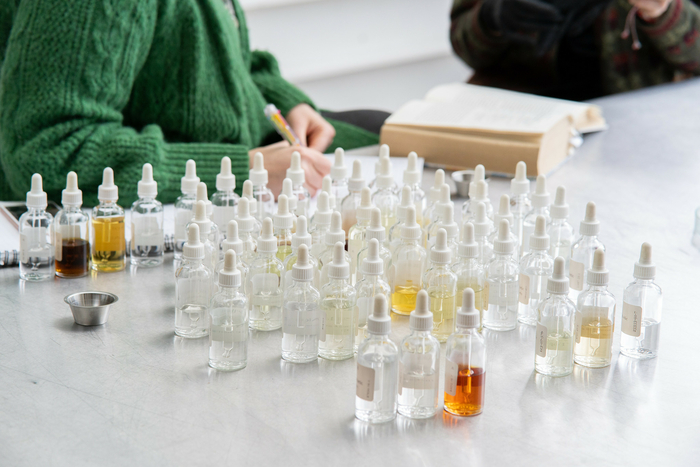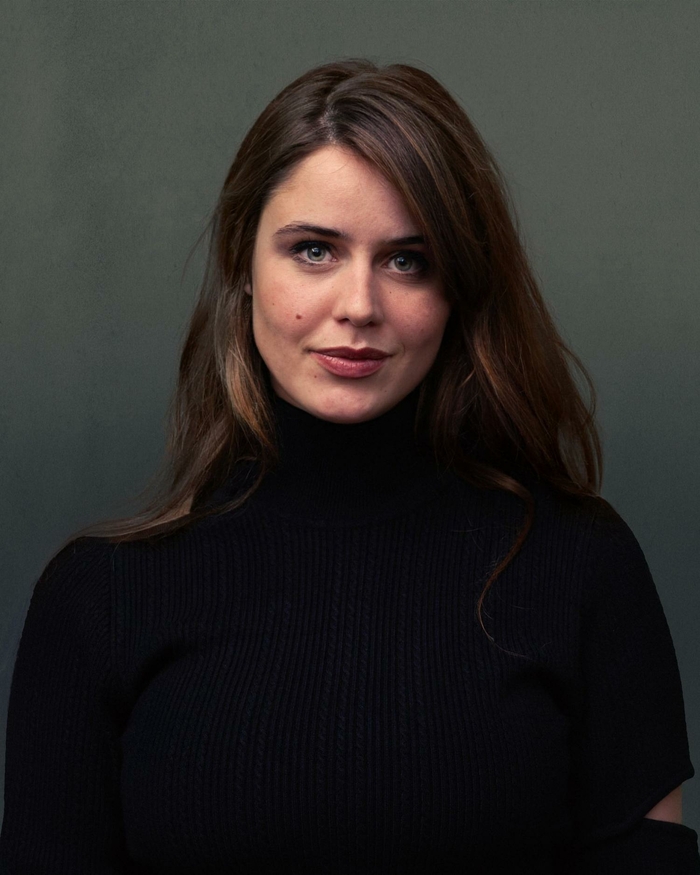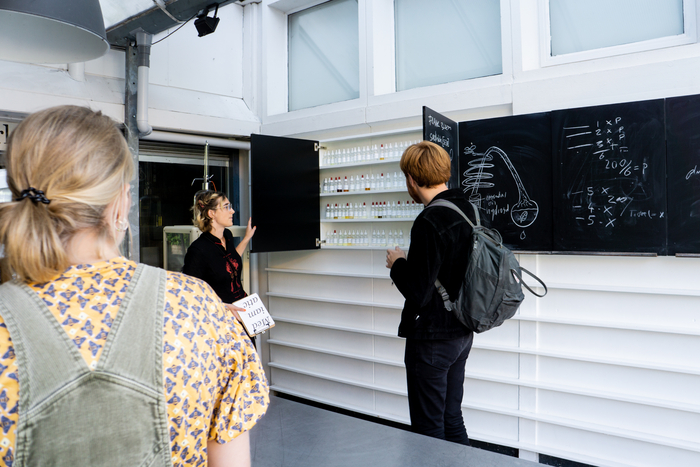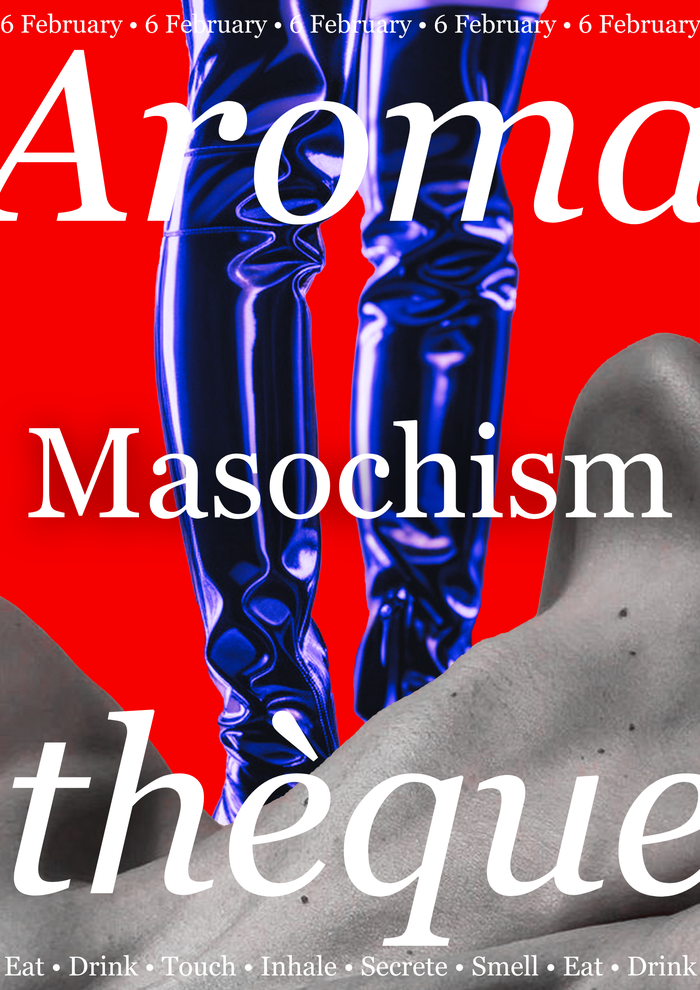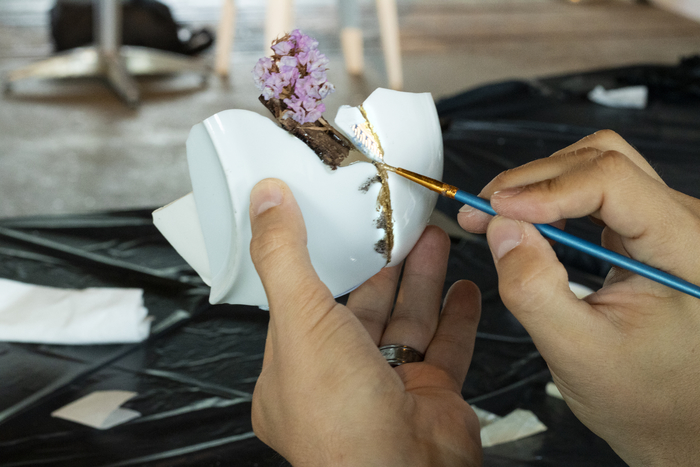During my visit to the Stedelijk museum together with autistic artist Martine Mussies and psychologist and autism expert Anna van der Miesen, these were the things we asked ourselves. Before we even start looking at the artwork we ran into issues, because how do we decide the difference between interpreting an artwork as autistic and projecting autism onto the artwork where there might be none? At the same time, we note that none of us approach the artwork as a blank slate, and the act of interpreting is always already also one of projecting. We also note that there are a variety of places where we can locate autism in the artwork: in the physical object itself, in its making process, in the relation to the viewer, or in the viewer? Walking through the exhibition, we encounter autism in any of these places, in all sorts of shapes and forms. Rather than diagnosing the entirety of an artistic object, we agree that we could also diagnose parts of the object.

Moving on to ‘Walk with Contrapposto’ (1968), a videotape in which we see Nauman walking through a narrow corridor and striking poses with each step, we begin to note the important elements of physicality and repetition throughout Nauman’s work, elements that return in works such as ‘Walking in an Exaggerated Manner Around the Perimeter of a Square’ (1968). Watching the work, Martine relates it to her own fondness of repetition, and asks whether Nauman perhaps simply enjoys the physical sensation of repetition. A focus on repetition, structure and patterns are strongly linked to autism, and all return throughout the exhibition. In this case we interpret both the artwork and the process of creating the artwork as autistic, as Nauman’s work often also makes little distinction between the process and the final object.
Other autistic elements can be found in another video work, ‘Sound Effects for Manipulating the T-Bar’ (1966), the intertitles reading “film of an actor pretending to be myself making a tape of the sound effects of the film Manipulating the T-Bar”. However, we then don’t see an actor, but Nauman himself. For all of us, how Nauman estranges both literally and metaphorically estranges himself from his own representation is deeply recognizable from an autistic perspective. It is the delineation between the inside world and the outside image of the self that is often deeply complicated from an autistic perspective, as many of us struggle with being able to consider how other might perceive us.

For this reason, we also discuss the importance of context for Nauman. Nauman's work often reflects on what it means to be an artist, such as in 'The True Artist Helps the World by Revealing Mystic Truths' (1967). The context of the studio defines what Nauman sees as his art, and the context of the non-autistic (or neurotypical) world defines what in turn becomes autism, and who is autistic. Both art and autism require institutions, psychology and the art market, to define and validate their being. This makes the two similar in their relation to the outside world. Can we imagine the existence of a world where autism is not the thing outside of the norm? What would such a world look like?
Bruce Nauman, 'Washing Hands Abnormal', 1996. - Video. Collectie Stedelijk Museum Amsterdam.

Moving through the exhibition noting the presence of autism in the works in a variety of ways, we end our visit by acknowledging that often autism and art remain inherently separated, as ideas of what art is and what autism is clash. Whereas Nauman’s repetitions are artistic, the autistic child’s constant headbanging is decisively not, and where Nauman’s repetition is encouraged by the grace of its artistic merit, the autistic child must be taught to ‘act normal’ and avoid ‘pointless’ repetition. In corona times, the everyday and banal repetition of washing hands shown in 'Washing Hands Abnormal' (1996) is especially poignant. Again, context means everything. While their might be little space for the uniqueness of autistic perception as the failure to categorize in a neurotypical society, but rather as a unique form of ‘feeling-seeing’ as philosopher Erin Manning calls it, perhaps it is in the liminal space of art that such forms of perception proof their true value?
